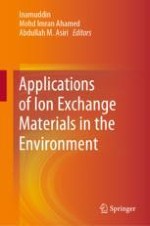2019 | OriginalPaper | Buchkapitel
4. Aluminosilicate Inorganic Polymers (Geopolymers): Emerging Ion Exchangers for Removal of Metal Ions
verfasst von : Bassam I. El-Eswed
Erschienen in: Applications of Ion Exchange Materials in the Environment
Aktivieren Sie unsere intelligente Suche, um passende Fachinhalte oder Patente zu finden.
Wählen Sie Textabschnitte aus um mit Künstlicher Intelligenz passenden Patente zu finden. powered by
Markieren Sie Textabschnitte, um KI-gestützt weitere passende Inhalte zu finden. powered by
